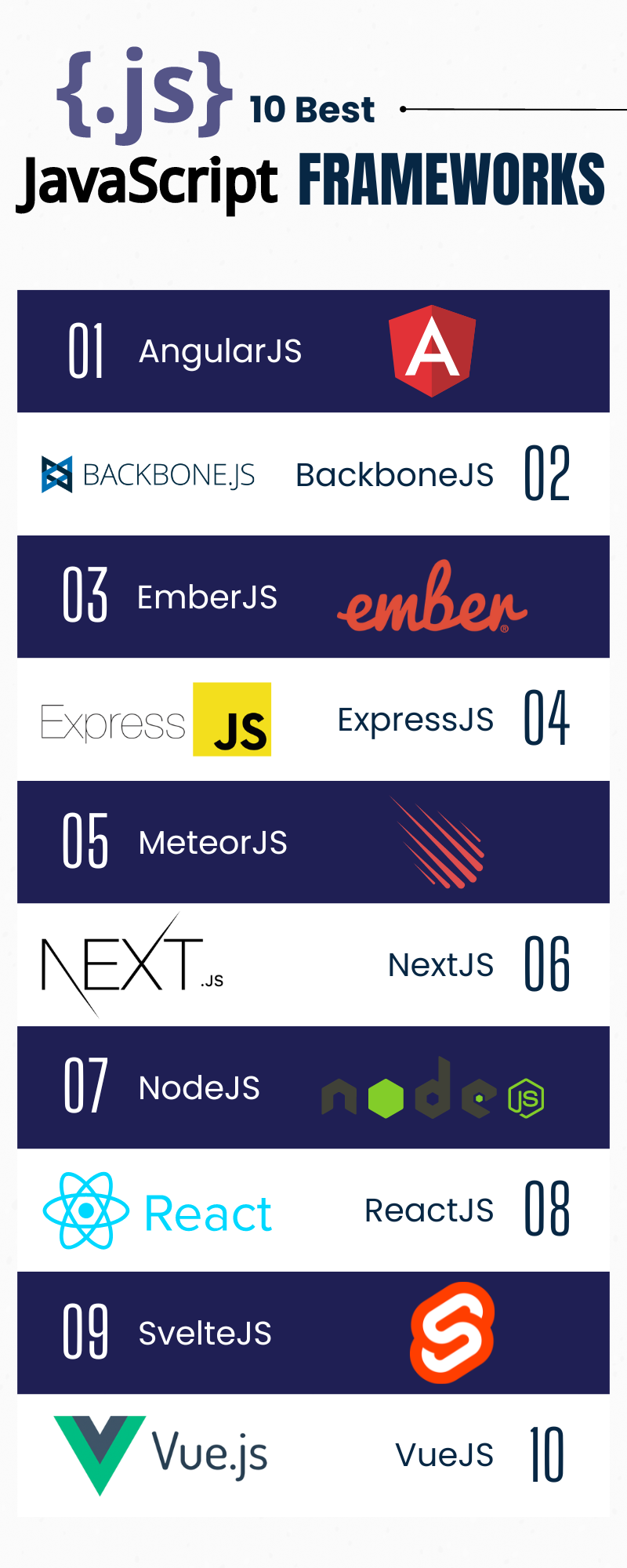Buzz Haven: Your Source for Trending Insights
Stay updated with the latest buzz in news, trends, and lifestyle.
Framework Face-Off: The Battle for JavaScript Supremacy
Discover the ultimate showdown of JavaScript frameworks! Which will reign supreme? Uncover the pros and cons in this epic face-off!
Framework Face-Off: React vs. Vue - Which One Is Right for You?
When it comes to selecting a JavaScript framework for your next project, the debate between React and Vue often surfaces. Both frameworks have their unique strengths, making them suitable for different types of applications. React, developed by Facebook, boasts a large ecosystem and extensive community support. Its component-based architecture allows for the easy reuse of code, which can accelerate development time for complex applications. On the other hand, Vue, created by Evan You, is often praised for its simplicity and ease of integration. With its gentle learning curve, developers can quickly adopt Vue for smaller projects or even integrate it into existing applications without a steep learning curve.
Choosing between React and Vue also depends on your team’s specific needs and familiarity with the frameworks. If your project requires a robust solution with a well-established ecosystem, React might be the better choice. It offers a wide range of libraries and tools for state management, routing, and more. Conversely, if you're looking for a framework that provides a smoother learning experience and quicker setup, Vue could be the optimal solution. Ultimately, the decision should align with your project requirements, team familiarity, and long-term maintenance considerations.

The Rise of Svelte: Can It Compete with Established JavaScript Frameworks?
The web development landscape is constantly evolving, and one of the most exciting developments in recent years has been the rise of Svelte. Unlike traditional JavaScript frameworks that rely heavily on a virtual DOM, Svelte takes a different approach by compiling components into highly efficient vanilla JavaScript at build time. This results in faster performance and a smaller bundle size, making Svelte particularly appealing for developers looking to optimize their applications. As more developers recognize the benefits of Svelte, it has sparked discussions about its potential to compete with established frameworks like React, Angular, and Vue.
Despite its relative youth, Svelte has garnered a dedicated following and extensive community support. Its intuitive syntax, combined with the reduction of boilerplate code, allows developers to rapidly prototype applications without the steep learning curve associated with some legacy frameworks. Moreover, Svelte's unique features, such as reactive programming and built-in state management, further position it as a serious contender in the JavaScript realm. As 2023 unfolds, it will be intriguing to see how Svelte continues to evolve and whether it can carve out its niche among the giants of web development.
JavaScript Framework Showdown: Performance, Flexibility, and Learning Curves Explained
When it comes to selecting a JavaScript framework for your next project, performance, flexibility, and learning curves are crucial factors to consider. Frameworks like React, Angular, and Vue.js each bring unique benefits to the table. For instance, React offers impressive rendering performance thanks to its virtual DOM, while Angular provides a robust feature set that includes two-way data binding and dependency injection. If you're looking for a lightweight solution with a gentle learning curve, Vue.js is an excellent choice, striking a balance between ease of use and powerful capabilities.
To further dissect these frameworks, let’s examine key aspects:
- Performance: While React excels in high-load applications with minimal performance lag, Angular's complex architecture can introduce overhead.
- Flexibility: Vue.js stands out by allowing developers to adopt features as needed, offering a modular approach that integrates smoothly with existing projects.
- Learning Curves: Generally, Vue.js has a reputation for being the easiest to pick up, making it ideal for beginners, whereas Angular requires more time to master its extensive functionality.
In conclusion, choosing the right JavaScript framework depends on your specific project requirements and team skill set. Weighing performance, flexibility, and learning curves will help you make an informed decision.